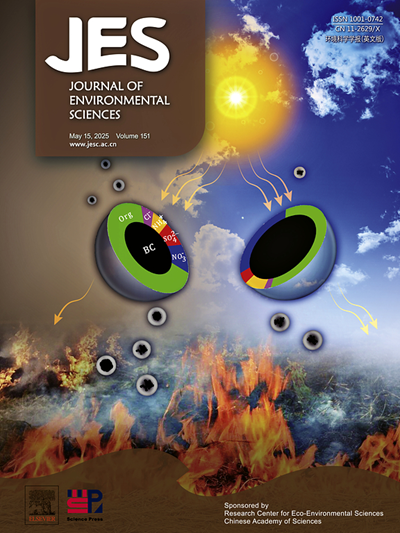Nano-sized titanium dioxide exposure induces non-hyperandrogenic polycystic ovarian syndrome in rats by increasing aromatase and apoptosis in granulosa cells
IF 5.9
2区 环境科学与生态学
Q1 ENVIRONMENTAL SCIENCES
引用次数: 0
Abstract
Polycystic ovarian syndrome (PCOS) is a frequently encountered disease with hormonal and metabolic dysfunction in women of reproductive age. Nano-sized titanium dioxide (nTiO2) has been widely used in skin care products, paints, food, and cosmetics. In this study, we found a substantial elevation of Ti in the follicular fluid of females diagnosed with non-hyperandrogenic PCOS (non-HA PCOS). Therefore, we orally subjected female rats to nTiO2 at 10 and 100 mg/kg body weight for 10 weeks. We found that nTiO2 triggered non-HA PCOS-like symptoms, including the increase of cystic follicles, estrous cycle disorder, and abnormal ovulation, but without high testosterone. By transcriptome sequencing, we identified that nTiO2 exposure inhibited the steroid hormone synthesis and activated the pro-apoptotic pathways. Upon validating these altered pathways, we discovered that aromatase (Cyp19a1) overexpression contributed to the decline in testosterone/estradiol ratio. Meanwhile, the apoptosis of granulosa cells was increased by nTiO2 exposure, which might result in the disorder of follicular development. This study presents the evidences revealing a pronounced correlation between nTiO2 exposure and the emergence of non-HA PCOS, urging people to promote the safe utilization of nTiO2.

纳米二氧化钛暴露通过增加颗粒细胞的芳香化酶和凋亡诱导大鼠非高雄激素性多囊卵巢综合征
多囊卵巢综合征(PCOS)是育龄妇女内分泌代谢功能紊乱的常见病。纳米二氧化钛(nTiO2)在护肤品、涂料、食品、化妆品等领域有着广泛的应用。在这项研究中,我们发现诊断为非高雄激素性多囊卵巢综合征(非ha多囊卵巢综合征)的女性卵泡液中Ti含量显著升高。因此,我们给雌性大鼠口服10和100 mg/kg体重的二氧化钛,持续10周。我们发现nTiO2引发非ha pcos样症状,包括囊泡增加、发情周期紊乱和排卵异常,但睾酮水平不高。通过转录组测序,我们发现nTiO2暴露抑制类固醇激素合成并激活促凋亡通路。在验证这些改变的途径后,我们发现芳香化酶(Cyp19a1)的过度表达导致了睾酮/雌二醇比例的下降。同时,nTiO2暴露使颗粒细胞凋亡增加,可能导致卵泡发育障碍。本研究提出了nTiO2暴露与非ha PCOS发生之间存在显著相关性的证据,敦促人们促进nTiO2的安全利用。
本文章由计算机程序翻译,如有差异,请以英文原文为准。
求助全文
约1分钟内获得全文
求助全文
来源期刊

Journal of Environmental Sciences-china
环境科学-环境科学
CiteScore
13.70
自引率
0.00%
发文量
6354
审稿时长
2.6 months
期刊介绍:
The Journal of Environmental Sciences is an international journal started in 1989. The journal is devoted to publish original, peer-reviewed research papers on main aspects of environmental sciences, such as environmental chemistry, environmental biology, ecology, geosciences and environmental physics. Appropriate subjects include basic and applied research on atmospheric, terrestrial and aquatic environments, pollution control and abatement technology, conservation of natural resources, environmental health and toxicology. Announcements of international environmental science meetings and other recent information are also included.
 求助内容:
求助内容: 应助结果提醒方式:
应助结果提醒方式:


